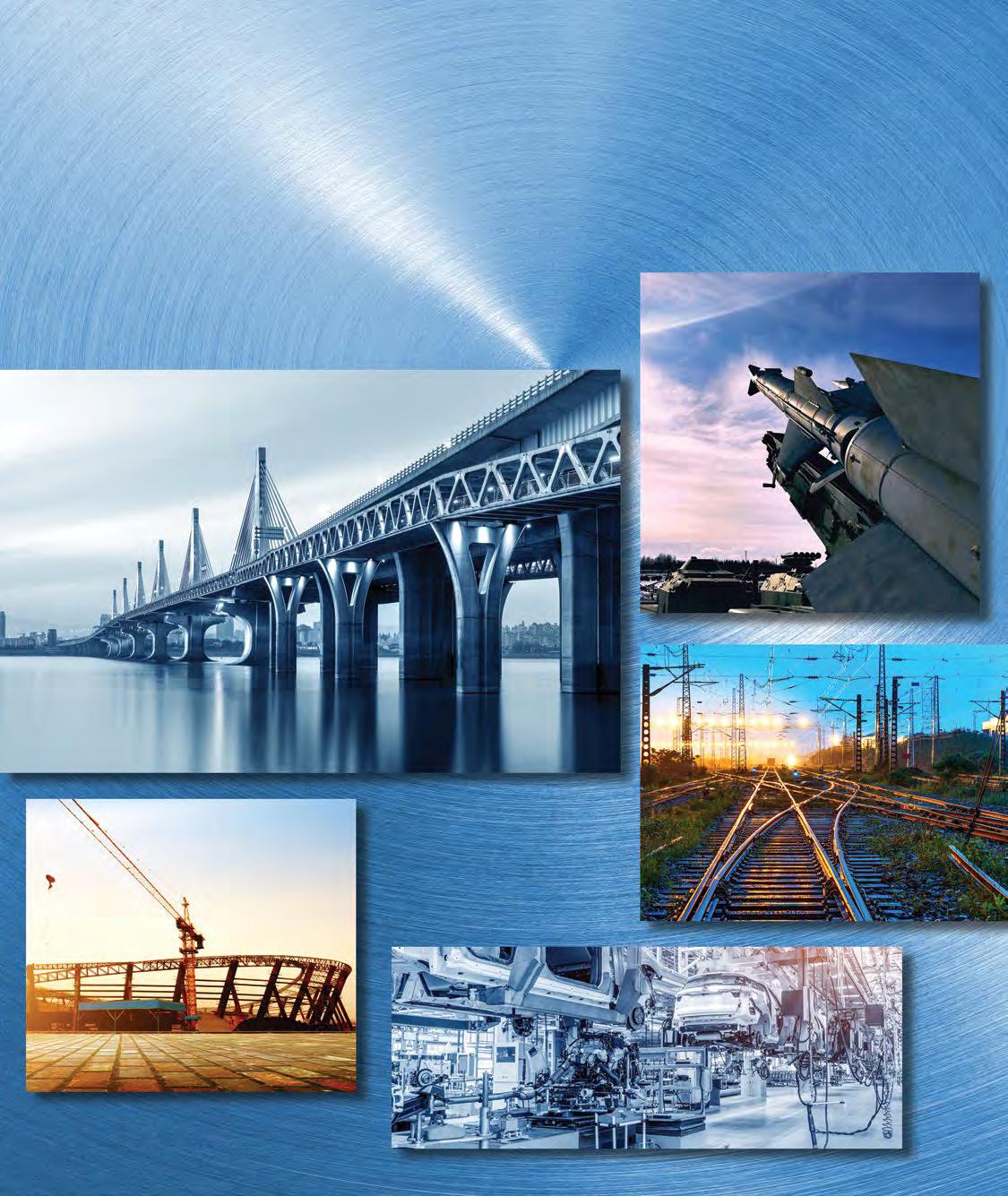
3 minute read
Self-reliance push to steel: Key opportunities and challenges
Sumit Maitra
India has firmly placed itself in the second position among world’s leading steel manufacturers.
Advertisement
Yet, it consumes just 74 kilograms of steel per head as per 2019 Worldsteel data, hovering at the bottom rung of the ladder with global average of 224.5 kgs.
China consumes 633 kgs. Japan, whom India displaced from the second position in the producers’ list, uses 498 kgs a year. Austria with 444.5 kgs, ranks first.
The prosperity and progress of a nation, with steel as a justifiable barometer, can be gauged not with the volume of a material that the country churns out but the amount each of its citizen consumes.
On that parameter, India needs some urgent catching up to do.
One of the first things that the Central government did after recovering from the initial blow of the pandemic was to focus on how to raise steel consumption in our country.
A series of virtual events were conducted with participation from leading corporates in the steel sector and their key executives.
Alongside, roadmap for a comprehensive steel sector policy was indicated which would be finalised following consultation with a leading global consultant. For that a selection process is on.
Boosting domestic steel consumption goes hand in hand with steps to turn selfreliant on domestic availability of items of consumables.
The pandemic has shown the extent our import-dependent automobile industry suffered when its Chinese supply chain snapped.
But turning Atmanirbhar can be achieved only when we face up to the challenges including lack of scale, high costs of logistics, bureaucratic red tapes, to name a few.
Here we look at some of the key opportunities and hurdles.
Housing
Ministry of Housing and Urban Affairs has given a strong push to new design based housing and across the country more than 15 lakh houses have been built or under construction using new technologies and materials, both, under Pradhan Mantri Awas Yojana as well as through other state agencies.
With the government recently setting a target of providing 1 lakh low-cost houses, there is significant opportunity in creating solutions for steel-intensive, low-cost houses.
About 158 lakh tons of steel is likely to be consumed in construction of all the houses sanctioned under Pradhan Mantri Awas Yojana according to Hardeep Singh Puri, minister, Housing & Urban Affairs and Ministry of Civil Aviation.
Addressing a webinar, the minister said that nearly 84 lakh tons steel and 370 lakh tons cement would have already been consumed in houses completed so far.
Smart cities are also triggering usage of steel.
About 5,151 projects worth more than Rs 2 lakh crore were identified in 100 smart cities and around 4,700 projects worth Rs 1,66,000 crore which is about 81 percent of the total projects proposed, has been tendered.
Out of this, 3,800 projects amounting to approximately Rs 1,25,000 crore or 61 percent, have been grounded and more than 1,638 projects worth over Rs 27,000 crores have been completed.
In order to improve mobility, cities have completed 215 smart road projects and 315 projects are near completion.
Aviation
Steel is being used extensively in all modern airport Terminal buildings for roof structure and as support to glass façade.
With steel roof structure, large column free spaces can be created to give unobstructed view and appearance.
With enhanced use of steel in terminal buildings, pre-engineered structures leads to ease in work and speedy construction.
While the value of steel used in construction of airport terminal buildings in the past three years was about Rs 570 crore, value of steel expected to be used for construction of terminal buildings in the next 5 years would be Rs1,905 crore.
And in the next five years, 15 new terminal buildings are planned at a cost of Rs 15,000 crore requiring large quantity of steel and that on an average 12-15 percent of cost component is steel work for airports.
Using more steel to make smaller airports
While the country is constructing 100 new airports across the country, shift to structural steel to construct them in place of reinforced concrete would significantly raise usage of steel in the aviation sector, secretary civil aviation Pradeep Singh Kharola said while addressing a webinar on Fostering Steel Usage in Housing & Construction and Aviation Sector.
“New airports have moved from RCC to structural steel. But smaller airports were being constructed with concrete. Within the next 5 years there would be 100 more airports. In smaller airports in remote locations, the challenge is to go for structural steel also,” Kharola said.
There is a need to look at lifecycle costs of these airports which would help shift towards steel.
But before wider adoption of steel, the steel industry should improve fire resistance capabilities of steel which is not as good as RCC, he suggested.






